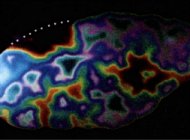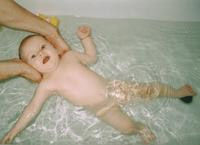What is cellulite and how to fight it
 Most likely, in the initial stages of development, this is an aesthetic problem. Cellulite begins with a violation of microcirculation of blood and lymph, the appearance of an ugly subcutaneous vascular network in the legs. Stagnation of blood and lymph leads to increased penetration of fluid (plasma) into the intercellular space, i.e. swelling of tissues. At this (I-II) stage of development, cellulite is still hardly noticeable, and only when the tissues are squeezed with fingers on the resulting crease, is uneven unevenness.
Most likely, in the initial stages of development, this is an aesthetic problem. Cellulite begins with a violation of microcirculation of blood and lymph, the appearance of an ugly subcutaneous vascular network in the legs. Stagnation of blood and lymph leads to increased penetration of fluid (plasma) into the intercellular space, i.e. swelling of tissues. At this (I-II) stage of development, cellulite is still hardly noticeable, and only when the tissues are squeezed with fingers on the resulting crease, is uneven unevenness.
The process further extends to cells suffering due to edema from an insufficient supply of nutrients and oxygen, as well as from a violation of toxin elimination, i.e. waste products of cells. Fibroblasts begin to produce thicker and more dense elastic fibers instead of thin ones. The mucopolysaccharide deposits formed as a result of the accumulation of edematous liquids increase the viscosity of the interstitial fluid, envelop the cells, compact the walls of blood vessels and cell membranes. These processes cause the formation of dense fibrous strands promoting the formation of small clusters of fat cells, compacted by a fibrous capsule – micronodules. At this stage (III) of the development of cellulite, the roughness of the skin and the density of the subcutaneous fat are already noticeable.
Tissue compaction contributes to the progression of stagnation, impaired blood and lymph circulation increase, which leads to further accumulation of metabolic products – intoxication. In adipose tissue, there are areas of significant reduction in blood circulation with reduced skin temperature and congestive areas with increased skin temperature. Large accumulations of fibrous fat cells, macronodules, are painful to the touch. At this stage, cellulite does not just spoil the shape – it worsens the general state of health, changes gait, spoils the posture, and in combination with increased weight contributes to the development of hypertension, varicose veins and secondary lymphostasis – elephantiasis. Therefore, the III-IV fibrous stage of cellulite can be regarded as a disease. Aesthetic problem becomes medical.
Cellulite causes an inferiority complex in women, they begin to feel shy of their bodies, avoid appearing on the beach and in the pool, refuse open dresses.
Why is this phenomenon observed only in women? And the reason lies in the various anatomical structure of the connective tissue. In males, connective tissue fibers supporting adipose tissue intersect as a grid, forming a dense framework, and fat cells adipocytes have smaller sizes. In women, fibers are arranged in parallel rows more loosely, and fat cells have larger sizes. Nature has endowed women’s tissues with good elasticity required during pregnancy, and fat cells the ability to store more high-energy reserves – fat for feeding the fetus and the subsequent feeding of the baby by the breast. Therefore, the most pronounced cellulite is in women with a high level of female sex hormones who have given birth and breastfeed a child.
There are also a number of factors contributing to the formation of cellulite:
First of all, such factors include hypodynamia, i.e. sedentary lifestyle, the lack of good muscle activity disrupts the outflow of venous blood and lymph, starting the process of cellulite formation.
Chronic intoxication is also of great importance: smoking, unhealthy diet, harmful working conditions, environmental pollution.
Also factors provoking the development of cellulite are: overweight – obesity, chronic stress, genetic predisposition, endocrinological diseases.
Are there effective methods to combat cellulite?
Of course, no one has yet succeeded in completely getting rid of stage III-IV cellulite, but stopping its development at earlier stages or making its manifestations unobtrusive is quite possible. Since the formation and development of cellulite is affected by a large number of different factors, there is a need for a rather long and , whenever possible, multilateral effects on the body. General recommendations, including:
dieting
non-smoking, coffee and spirits,
increase in motor activity, sports,
well known to all, although not always respected. However, compliance with these recommendations is very important.
It is better to select programs of anti-cellulite procedures individually, according to the recommendation of an aesthetic doctor or cosmetologist in a specialized medical or health center.
Such programs include the following main types of exposure:
1. Exercise simulators, shaping, swimming, jogging.
2. To improve blood and lymph circulation, detoxification, it is recommended to conduct various types of special manual or apparatus massage (vacuum, vibratory massage, pressure therapy), as well as microcurrent therapy.





